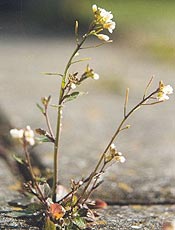Isótopos radioativos são usados para diagnosticar e tratar alguns tipos de câncer, problemas da tiróide, para análises cardíacas e para exames de pulmão
Quando 75.000 torcedores lotarem o Dolphin Stadium, em Miami, para o Super Bowl no dia 4 de fevereiro, pelo menos alguns deles vão ter de levar atestados médicos para explicar por que são radioativos o suficiente para disparar alarmes de "bombas sujas".
Com o crescente uso de isótopos radioativos na medicina, e de detectores de radiação nos Estados Unidos, pacientes estão disparando alarmes em locais inusitados, dizem autoridades médicas e de segurança.
Cerca de 60.000 pessoas passam diariamente por tratamento ou fazem exames, nos EUA, que deixam pequenas quantidades de material radioativo nos seus corpos, de acordo com a Sociedade de Medicina Nuclear. Isso não é o suficiente para provocar danos aos pacientes ou a outras pessoas, mas sim para disparar alarmes de radiação, até três meses depois das aplicações.
Desde os ataques de 11 de setembro, o Departamento de Segurança Interna dos EUA distribuiu mais de 12.000 detetores portáteis de radiação, a maioria para organismos de proteção de fronteiras e alfândegas em aeroportos, portos marítimos e passagens terrestres. Também são usados sensores em prédios do governo e em grandes eventos públicos, como o Super Bowl, que são considerados potenciais alvos para terroristas.
Na festa anual de Natal no Rockefeller Center, em Nova York, em dezembro, a polícia retirou seis pessoas da multidão para questioná-las, por terem disparado o alarme.
"Todas elas haviam passado por tratamento médicos com isótopos radioativos em seus corpos", disse Richard Falkenrath, vice-comissário de contraterrorismo da cidade, em encontro de governadores republicanos realizado recentemente em Miami. "Isso acontece o tempo todo".
Os isótopos são usados para diagnosticar e tratar alguns tipos de câncer e problemas da tiróide, para análises cardíacas e para exames de ossos e pulmões.
A Comissão de Regulação Nuclear recomendou, em 2003, que médicos advirtam os pacientes de que podem disparar alarmes depois de tratamentos com o material. Isso depois que a polícia parou um ônibus que havia disparado um alarme de radiação em um túnel de Nova York. Um dos passageiros tinha feito tratamento de tiróide com um elemento radioativo.
Em agosto, o British Medical Journal descreveu o caso de um britânico de 46 anos de idade que disparou sensores do aeroporto de Orlando, na Flórida, seis semanas depois de ter feito tratamento da tiróide com um isótopo radioativo.
Ele foi detido, revistado nu e examinado por cães farejadores, antes de ser libertado, disse a publicação na seção "Lição da Semana".









